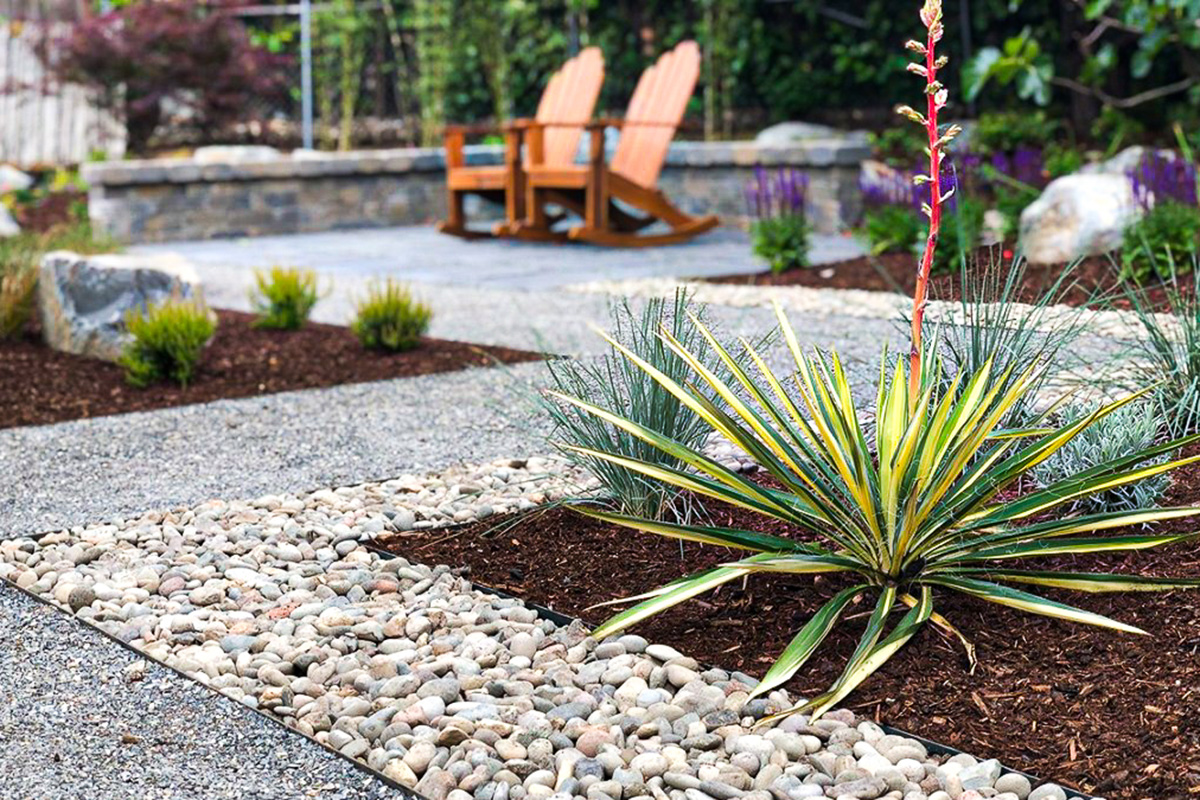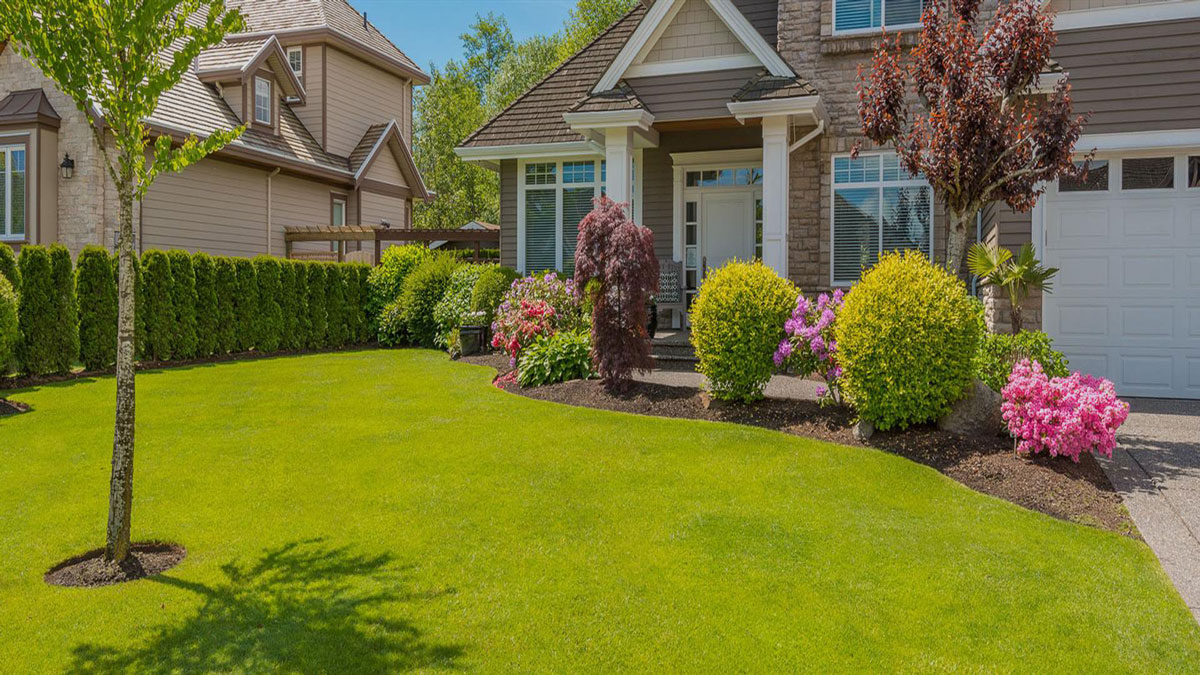The five basic elements of landscape design are:
- Line: Lines in landscape design can be either straight or curved and are used to create borders, paths, and edges within the landscape. They guide the eye and create visual movement. Straight lines convey a formal and structured feel, while curved lines suggest a more natural and organic look.
- Form: Form refers to the shape and structure of elements within the landscape, including plants, trees, shrubs, and hardscape features such as walls, fences, and sculptures. Forms can be geometric or organic, and they add visual interest and structure to the landscape.
- Texture: Texture relates to the surface quality of elements in the landscape, such as the roughness or smoothness of plant leaves, bark, stones, or paving materials. Incorporating a variety of textures creates depth and contrast, adding richness and complexity to the landscape design.
- Color: Color is one of the most impactful elements of landscape design and can evoke different moods and emotions. Plants, flowers, foliage, and hardscape materials contribute to the color palette of the landscape. Warm colors like red, orange, and yellow create a vibrant and energetic atmosphere, while cool colors like blue, green, and purple evoke a sense of calm and tranquility.
- Scale: Scale refers to the size of elements in relation to each other and to the surrounding environment. It’s important to consider scale when selecting and placing plants, trees, and hardscape features to ensure they are proportionate and harmonious within the landscape. Properly scaled elements create visual balance and cohesion.
These five elements work together to create a harmonious and visually pleasing landscape design. By carefully considering and incorporating line, form, texture, color, and scale, landscape designers can create dynamic and inviting outdoor spaces that enhance the beauty and functionality of any environment.


